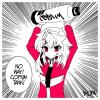I've always wondered why Hamilton seems to "group" his downshifts more than others(i.e. ~52 secs in that vid he goes "BRAKE.downdowndown..downdown...down"maverick69 wrote on Sat, 31 October 2009 16:03
Pole lap:
http://news.bbc.co.u...one/8335643.stm
Smug
then at ~1:09 "BRAKE..downdown..downdown.down")
As opposed to someone like Raikkonen who seems to do evenly spaced downshifts ( at ~14 secs he does "BRAKE...down.down.down.down..down)
Maybe there are other people that do this too, but I just seem to notice it much more watching Hamilton. I wonder if this has any effect on the car under braking?
Taken from http://forum.planet-...amp;#msg_num_26




















